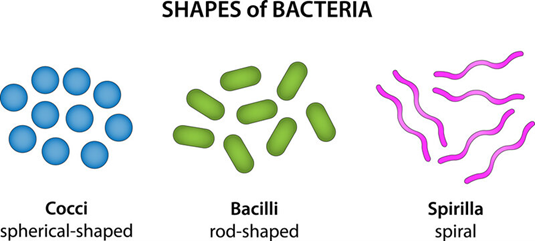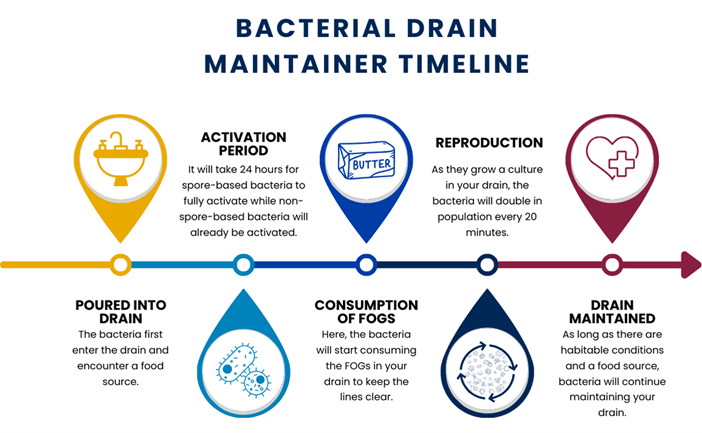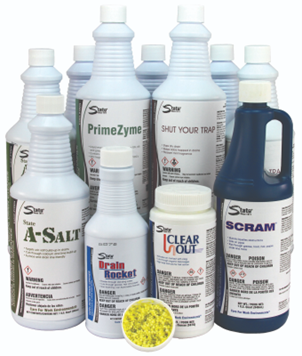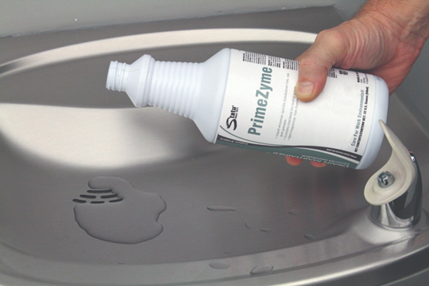How Do Biological Drain Maintainers Work?
How Do Biological Drain Maintainers Work?
When you hear the word “bacteria,” your mind probably immediately jumps to words like “bad” or “unhygienic.” But when it comes to your drain maintainers, bacteria can actually be a good thing—and they won’t cause harm to your facility.
At State Chemical, we sell several bacterial drain maintainers, including Ecolution Drain Line Maintainer, BD-150X, and Line Bac’R. We understand that it can be tough to find the right drain maintainer for you, and it can be difficult to know whether it will really work.
We’ve taken the time to explain how bacteria work in biological drain maintainers so that you don’t have to worry about whether they will be effective in your facility. After reading this article, you’ll understand how different kinds of bacteria maintain drains and will be prepared to decide whether they’ll be a good fit for your drain.
What Kind of Bacteria Are in Biological Drain Maintainers?
All bacteria used in drain maintainers are non-pathogenic, meaning they pose no risk to your health. Think about them like the bacteria in yogurt: just as those bacteria help to improve your gut health, these bacteria help to improve your drain health.
Of these non-pathogenic bacteria used in drain maintainers, there are two main kinds: bacillus and pseudomonas.
Bacillus
Bacillus bacteria are spore-based, meaning that the bacteria are in a spore state until activated by a food source. A spore state is essentially a kind of hibernation, where the bacteria are inactive and hidden in their spores until conditions are survivable for them. Once there’s an available food source, the bacteria “wake up” and become active.
Bacillus bacteria can also survive drastic conditions because they can return to their spores even after activation if conditions become uninhabitable. While in spores, they’re not yet functioning, so they can handle a little more than pseudomonas bacteria can.
A food source is what triggers bacillus bacteria to activate. Activation starts two to three hours after they enter your drain and encounter a food source, but bacillus will be fully activated within 24 hours of you putting them down your drain.
Additionally, bacillus bacteria are aerobic. This means they need oxygen in order to survive. In order to keep them alive and functioning, it’s important that they are in an environment that contains sufficient amounts of oxygen.
An example of an oxygen-rich drain type would be your average kitchen sink drain. With enough space between uses, kitchen drains will allow air to flow through, sustaining the bacillus bacteria in the pipes.
On the flip side, you shouldn’t use aerobic bacteria if you have a forced main line, as this environment doesn’t actually have the oxygen needed in order for the bacteria to survive.
Pseudomonas
Pseudomonas bacteria are live, non-spore-based bacteria. This means that when you receive a product with pseudomonas bacteria in it, the bacteria are alive and active before you even put them down your drain. This can be a good thing because they start working more quickly than bacillus bacteria, but it can also be a bad thing because they’re more sensitive to their environment.
For example, bacteria might be transported in the back of a 110°F truck during delivery to your facility. Where bacillus bacteria would hide from the heat in their spores, the pseudomonas bacteria will likely be killed before they even arrive at your facility.
It’s important to take more care when handling pseudomonas bacteria. You’ll need to be extra careful about providing them with a suitable environment to live in and ensuring that they are safely transported to minimize their risk of death. But if your drain has the conditions to keep them alive, pseudomonas bacteria more effectively digest fats, oils, and greases (FOGs) than bacillus bacteria and have no activation period, making them an ideal choice in the right conditions.
How Do Bacteria Work in Drains?
If you’re investing in a product, your number one concern is probably whether it’s effective. This concern is probably amplified with a less familiar product like a biological drain maintainer.
Bacterial drain maintainers are regularly fed into your drain, often via a feed pump, releasing bacteria into the drain line. From there, the bacteria feed on the FOGs and other organics in your drain by releasing enzymes. The enzymes break down the food source into smaller bits and then the bacteria feed on those bits, digesting them into carbon dioxide and water so that they can easily flow down the drain.
You can also think of it like eating a steak. The enzymes are the knife that breaks up the steak into smaller pieces so that you (or the bacteria) can easily eat and digest it. This is a permanent change, so you don’t need to worry about FOG reformation down the drain line like you would with emulsifying drain maintainers.
Additionally, once released, bacteria keep working as long as they have livable conditions and a food source. They will also continue reproducing and clearing more buildup as the colony grows. In biological drain maintainers, bacteria double every 20 minutes. With natural reproduction plus consistent product usage, there will be billions of bacteria clearing the FOGs from your pipes.
Do Bacterial Drain Maintainers Work as Well as Other Drain Maintainers?
Now you understand how bacterial drain maintainers work, but you may still be wondering if they work as well as other drain maintainers you may have used, such as emulsifiers.
There is no difference in chemical effectiveness between biologicals and emulsifiers. Both categories can achieve successful results. However, there is a difference in which product might be the most effective for your facility.
If you want a drain maintainer that works as quickly as possible, emulsifiers are the better fit for you. Where biologicals require a 24-hour activation period before they fully begin working, emulsifiers will instantly start melting down the buildup in your drain and keeping the line clear.
However, if you want a drain maintainer that gets to the root of the problem and keeps working over a longer period of time, biologicals are for you. Once they get started, the bacteria in biologicals double every 20 minutes, and as long as they have a food source, they keep maintaining your drains and reproducing. They are more of a time investment, but they treat the issue at its source, whereas emulsifiers, while effective, just move buildup into the sewer to resolidify.
It’s also important to note that emulsifiers and biologicals are not necessarily mutually exclusive. There are drain maintainers on the market that are both emulsifiers and biologicals. Be sure to read all product information when purchasing; just because you’re buying one option doesn’t mean you aren’t also buying the other.
Properly Using Bacteria in Drains
Just as with any product, when you handle a biological drain maintainer, you’ll want to be sure you’re using it properly. Be sure to read the label directions for proper usage, but with bacteria, you’ll also want to think about where to use it.
When you pump this product into your drain, it’s easy to assume it’ll do its job and forget about it, but bacteria are alive. If they are put into an uninhabitable location, they’ll die, and your drain buildup will continue.
Livable conditions for bacteria are locations with a food source, temperatures of at least 40° F and no more than 120° F, and a pH of 6–9. Drains that do not fit these criteria are not suitable for bacterial products.
For example, a standard kitchen drain will usually be suitable for these products if kept at usual temperatures and used as directed. Meanwhile, you won’t want to use bacteria in a drain that receives drainage from a high-temperature dish machine. With constant fluctuations in temperature and pH, bacteria will die off, and your FOG buildup will persist.
Additionally, it’s important not to use bacteria in drains that use disinfectants or sanitizers. Why? Disinfectants and sanitizers may be intended to kill harmful bacteria, but they’ll just as easily kill the “good” bacteria in your drains. If you intend to use a drain maintainer in a three-compartment sink, for example, you’ll want to purchase a non-bacterial option like an emulsifier.
Your Next Step: Explore Your Biological Drain Maintainer Options
You’re worried about choosing the right drain maintainer for your facility, but now, you know how bacterial drain maintainers work and understand whether they’ll work well for your drain. From here, your next step is to consider the pros and cons of biological drain maintainers.













